Laminate countertops have come a long way in recent years, and for those seeking an affordable yet elegant option, laminate that mimics the look of stone is an excellent choice. Laminate, once considered a basic, utilitarian material, has evolved with new printing and finishing technologies. Now, high-end laminate countertops can closely resemble the intricate patterns, textures, and colors of natural stone surfaces like granite, marble, and quartz. This transformation allows homeowners to enjoy the aesthetic appeal of stone without the high cost, weight, and maintenance that often come with natural materials.
Opting for laminate countertops that look like stone can also reduce the environmental footprint compared to quarrying and transporting natural stone. Today’s laminate surfaces are versatile, and durable, and offer an extensive range of styles, providing options to match various design themes and personal preferences.
One of the most remarkable aspects of laminate that looks like stone is its variety of patterns and finishes. In the past, laminate used to come in solid colors or simple patterns that didn’t mimic natural stone. Today, however, manufacturers use advanced digital imaging to produce realistic stone visuals. From classic marbled swirls to speckled granite patterns and even the subtle shimmer found in quartz, these designs can be very convincing. High-definition printing and embossing techniques allow these laminates to not only look like stone but to have textures that mimic stone surfaces as well. The level of realism achieved is often enough to fool the casual observer, giving kitchens and bathrooms a sophisticated look without the hefty price tag of actual stone.
Durability is a major factor for many homeowners when selecting countertops, and laminate options have improved significantly in this regard. Laminate used to be susceptible to scratching, peeling, and heat damage. However, innovations in materials have made modern laminate countertops more resistant to daily wear and tear. While they may not match the hardness of granite or quartz, stone-look laminate countertops today are built to withstand regular kitchen activities. They are resistant to scratching, chipping, and staining, and some brands even incorporate protective coatings that add another layer of durability. Though they still need to be treated with care, laminate countertops are more robust and resilient than ever, making them a practical choice for busy households.

An additional advantage of laminate countertops is their low-maintenance nature. Natural stone surfaces often require sealing to protect against stains and moisture, and they can be sensitive to acidic substances and require specific cleaners. In contrast, laminate countertops are non-porous, which makes them inherently resistant to stains and bacteria. There’s no need for regular sealing, polishing, or specialty cleaning agents. Basic cleaning with mild soap and water is generally all that’s required to keep a laminate surface looking good. This ease of care makes stone-look laminate ideal for those who want a luxurious look but don’t have the time or budget for extensive upkeep.
Laminate countertops are also lightweight, which makes them easier to install compared to solid stone countertops. Natural stone is heavy, which can necessitate additional reinforcement in cabinetry, leading to added installation complexity and cost. In contrast, laminate countertops don’t require special support structures, and they can often be installed more quickly, which can reduce labor costs. This ease of installation also makes laminate a feasible choice for DIY projects, allowing homeowners to save even more by tackling the installation themselves if they’re up for it. Plus, since laminate is typically sold in large sheets that can be cut to size, it offers a good level of flexibility for custom shapes and layouts.
When it comes to the cost, laminate is considerably more budget-friendly than natural stone, quartz, or even some synthetic stone options. Depending on the specific material and manufacturer, natural stone countertops can cost hundreds of dollars per square foot, while laminate can be a fraction of that price. This affordability doesn’t mean compromising on design; it simply allows for a greater range of options within a typical renovation budget. With laminate, it’s possible to experiment with different styles, even within the same space, without a significant financial commitment. It’s an excellent option for those looking to create a high-end look without overspending.

A wide variety of edge styles are available for laminate countertops that mimic stone, which can add to their authenticity. One common complaint about older laminate styles was the telltale square edge that lacked the sophistication of natural stone edges. Now, however, laminate countertops can come with edge options such as bullnose, ogee, and beveled edges, which provide a polished, natural appearance. These edge profiles can greatly enhance the overall aesthetic, making it harder to distinguish the laminate from real stone. Additionally, rounded edges reduce the likelihood of chipping and offer a safer option for households with children.
In addition to aesthetics, laminate countertops offer a customizable approach to matching kitchen and bathroom design themes. With so many stone-inspired options available, from light marbles to deep granites, it’s possible to find a laminate that complements nearly any design palette. Whether aiming for a contemporary, minimalist look with sleek white or gray marble patterns or a cozy, rustic feel with earthy granite, laminate provides the flexibility to create a unique and cohesive style. As trends change, laminate can also be replaced more affordably, making it a versatile choice for homeowners who want to keep their spaces up-to-date.
Though many benefits come with laminate that looks like stone, it’s still important to be aware of its limitations. Unlike solid stone, laminate is not heat-resistant, so hot pans or pots should never be placed directly on its surface. Doing so can result in scorch marks that are difficult, if not impossible, to remove. The material is also vulnerable to sharp objects; cutting directly on a laminate surface can leave permanent scratches. While laminate can handle normal wear, taking these precautions is essential to keep the surface in top condition for the long term. Using trivets and cutting boards can easily prevent damage and extend the life of the countertop.
Another potential drawback is the need for seam placement in larger countertop layouts. Since laminate is typically available in sheets, seams may be visible where pieces are joined. Manufacturers have made strides in minimizing the visibility of seams, but in certain lighting or at specific angles, they can still be noticeable. If the pattern includes veining, aligning the design across seams can help disguise them, but it may not be entirely seamless. Choosing a pattern with less variation or smaller particles can reduce the prominence of seams, which can be a solution if seamless continuity is a priority.
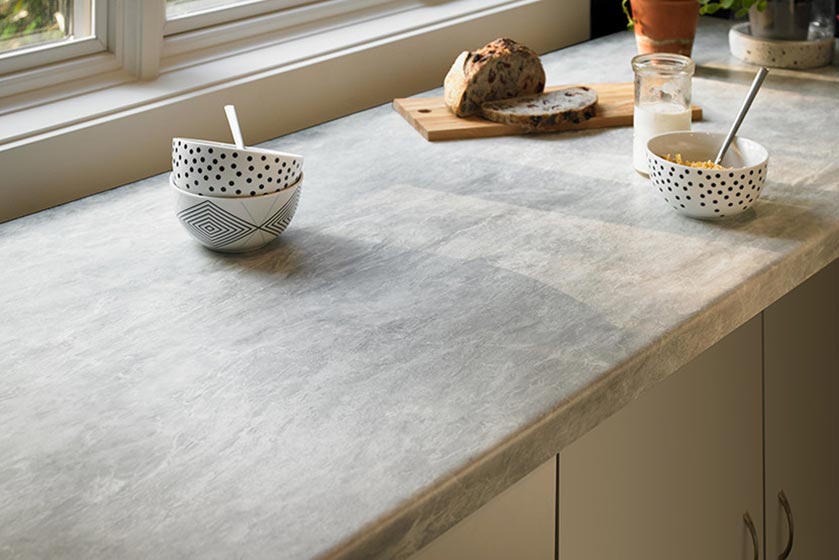
From a sustainability standpoint, laminate countertops offer certain advantages over natural stone. The quarrying, processing, and transportation of natural stone can have a significant environmental impact. Laminate, however, is often made from wood products like particleboard or MDF, which utilize wood byproducts that might otherwise go to waste. Some manufacturers also use recycled materials in the production of laminate. While laminate itself is not biodegradable, its lower energy footprint during production and transportation can make it a more sustainable choice than natural stone.
It’s worth noting that, although laminate countertops have improved significantly, they don’t have the longevity of natural stone. Stone countertops can last decades, sometimes even centuries, when properly maintained, while laminate has a shorter lifespan. Over time, laminate may develop scratches, lose some of its luster, or incur damage that would not affect harder materials like granite. However, its affordability and ease of replacement often offset this drawback, as replacing laminate is generally much less expensive than replacing stone.
Installing laminate countertops that look like stone can be a way to increase a home’s value without over-investing. Kitchens and bathrooms are high-impact areas for potential buyers, and having updated, stylish countertops can make a strong impression. While laminate won’t add as much resale value as high-end stone countertops, it can still provide a good return on investment by giving spaces a modern and attractive look. Additionally, for rental properties or budget-friendly renovations, stone-look laminate offers an upgrade that’s both stylish and affordable.
Laminate countertops that look like stone offer a compelling combination of beauty, practicality, and affordability. They can mimic the luxurious appearance of natural stone without the associated costs or maintenance requirements. This balance of aesthetics and functionality makes laminate an appealing option for homeowners who want the look of stone but need a more manageable material. In addition, with the range of textures, colors, and styles available, laminate can be tailored to match nearly any design vision.
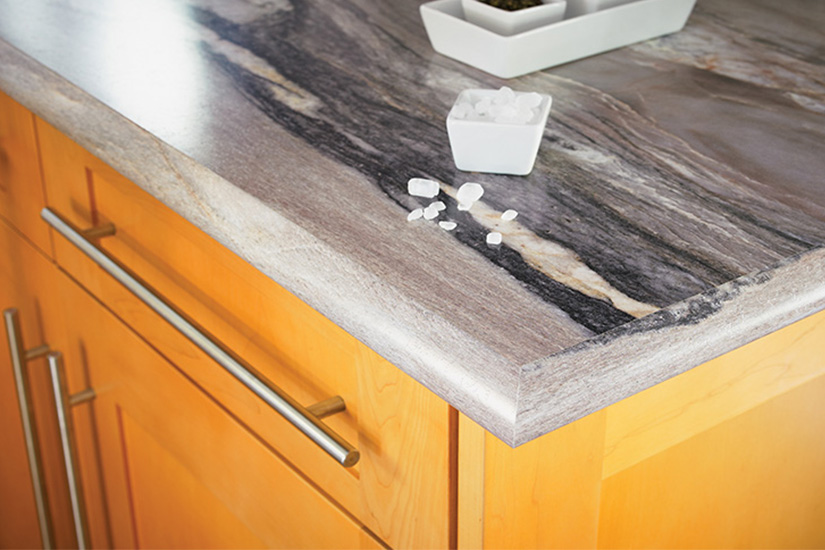
Common Mistakes to Avoid:
Direct Exposure to Heat: Laminate countertops are not heat-resistant, so placing hot pots and pans directly on them can lead to burns and discoloration. Always use a trivet or heat-resistant mat.
Cutting on the Surface: Laminate is prone to scratching if you cut directly on it. Use a cutting board to avoid permanent damage to your countertop.
Improper Cleaning Agents: Using harsh cleaners or abrasive sponges can wear down the laminate finish. Stick to mild soap and water or laminate-friendly cleaners to preserve the countertop’s appearance.
Ignoring Seam Placement: Seams can be noticeable in laminate countertops, so plan seam placement carefully to reduce visibility, especially if the pattern has distinct lines or veining.
Assuming All Laminate is Low-Quality: Modern laminate has improved significantly, so don’t dismiss it without exploring high-quality options. Many high-end laminates now closely mimic stone surfaces and are surprisingly durable.
Choosing the Wrong Edge Style: The edge of the countertop can make a big difference in its appearance. Selecting an edge that complements the stone pattern can enhance the illusion of real stone.

Can laminate countertops look like natural stone?
Yes, laminate countertops can closely resemble natural stone thanks to advancements in digital printing and embossing. Manufacturers have developed methods to replicate the textures, colors, and veining patterns found in materials like granite, marble, and quartz. While they may not be identical upon close inspection, high-quality laminates are remarkably convincing and can give your kitchen or bathroom the upscale look of stone at a fraction of the cost.
How durable are laminate countertops compared to stone?
Modern laminate countertops are more durable than in the past, able to withstand daily use and resist scratches, stains, and minor impacts. However, they are not as hard as stone and can be vulnerable to heat and sharp objects. Using trivets, cutting boards, and proper cleaning products will help maintain their condition. While laminate won’t last as long as natural stone, its affordability and ease of replacement can offset this drawback.
Do laminate countertops require special maintenance?
Laminate countertops are very low-maintenance compared to stone. They don’t need regular sealing or special cleaners. Basic cleaning with mild soap and water is generally all that’s needed. It’s important to avoid abrasive cleaning tools and harsh chemicals, as these can damage the surface. Overall, laminate is one of the easiest materials to care for, making it ideal for busy kitchens.
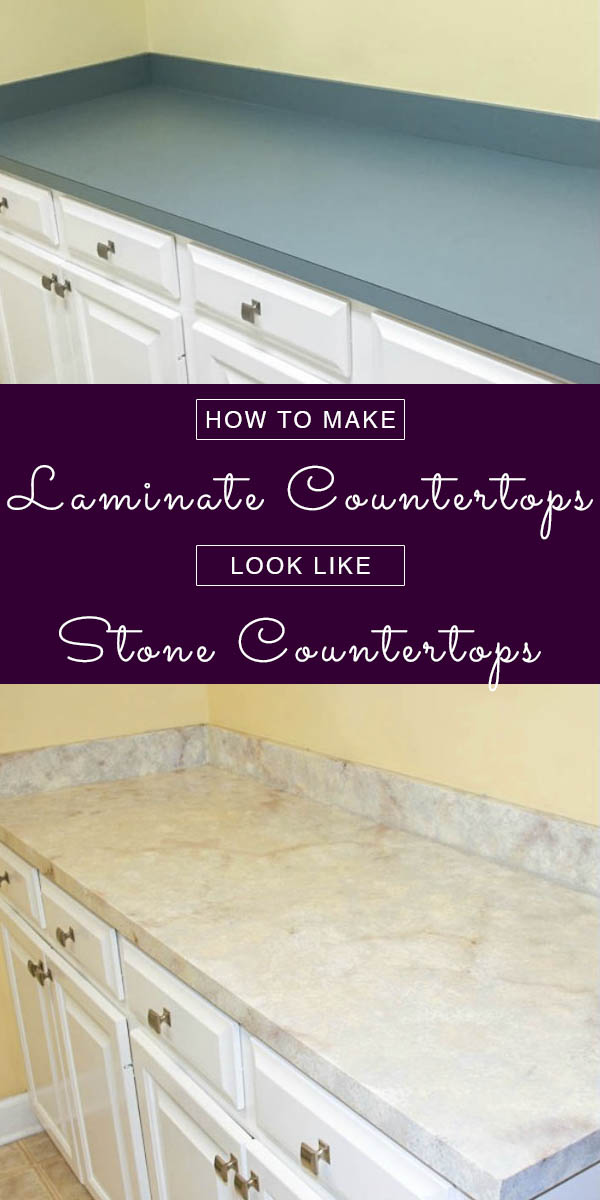
Can laminate countertops be used in high-traffic kitchens?
Yes, laminate countertops can be used in high-traffic kitchens, especially those designed with durability in mind. While they require some basic care, like using cutting boards and avoiding direct heat, modern laminates are built to handle everyday activities. For households with heavy kitchen use, choosing a high-quality, stone-look laminate will ensure a durable and stylish surface.
How do laminate countertops compare in cost to natural stone?
Laminate is significantly more affordable than natural stone. Depending on the specific type, stone countertops can cost several times more than laminate. The cost savings on laminate allow for budget flexibility, whether you’re renovating a whole kitchen or just upgrading the countertops. Laminate can deliver a sophisticated stone appearance without the hefty price tag.
Are laminate countertops a good investment for resale value?
While laminate doesn’t add as much resale value as high-end stone, it’s still a cost-effective way to update a kitchen or bathroom and create a fresh, attractive look. In competitive markets, a well-chosen, high-quality laminate that looks like stone can make a strong impression on potential buyers, offering a good balance of affordability and appeal.

Are Laminate Countertops Making a Comeback? u2014 Multi Trade Building
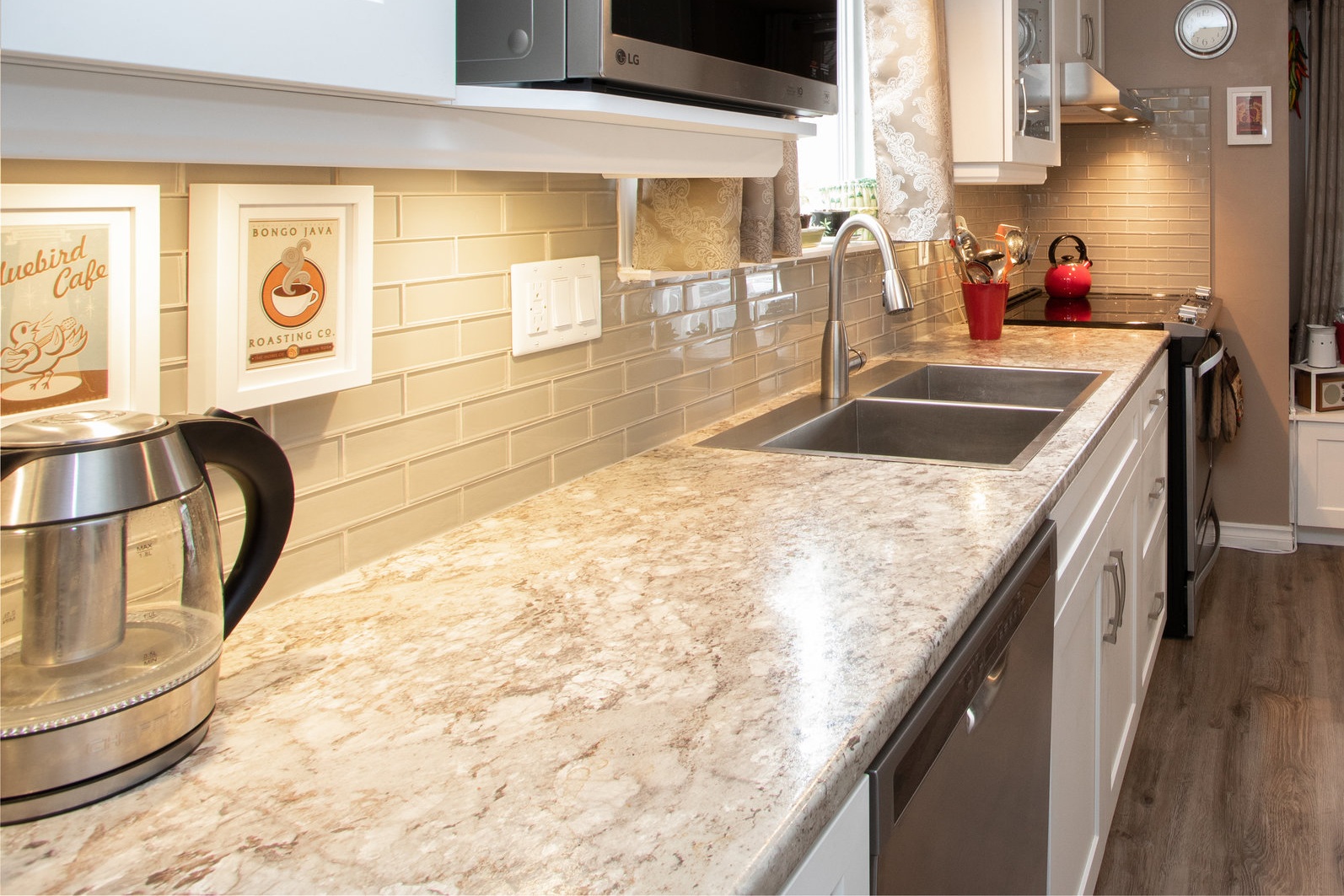
Marble/stone looking formica/laminate countertops
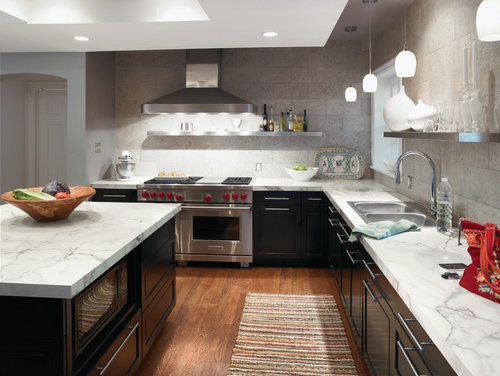
Related articles:
- Painting Kitchen Laminate Countertops
- Quartz Laminate Countertops
- Laminate Countertops Installation
- Laminate Countertop For Kitchen Island
- Kitchen Island Laminate Countertops
- Cheap Laminate Countertops
- Laminate Countertops That Look Like Stone
- Plastic Laminate Countertops
- Laminate Countertop Ideas For Kitchen
- Dark Green Laminate Countertops